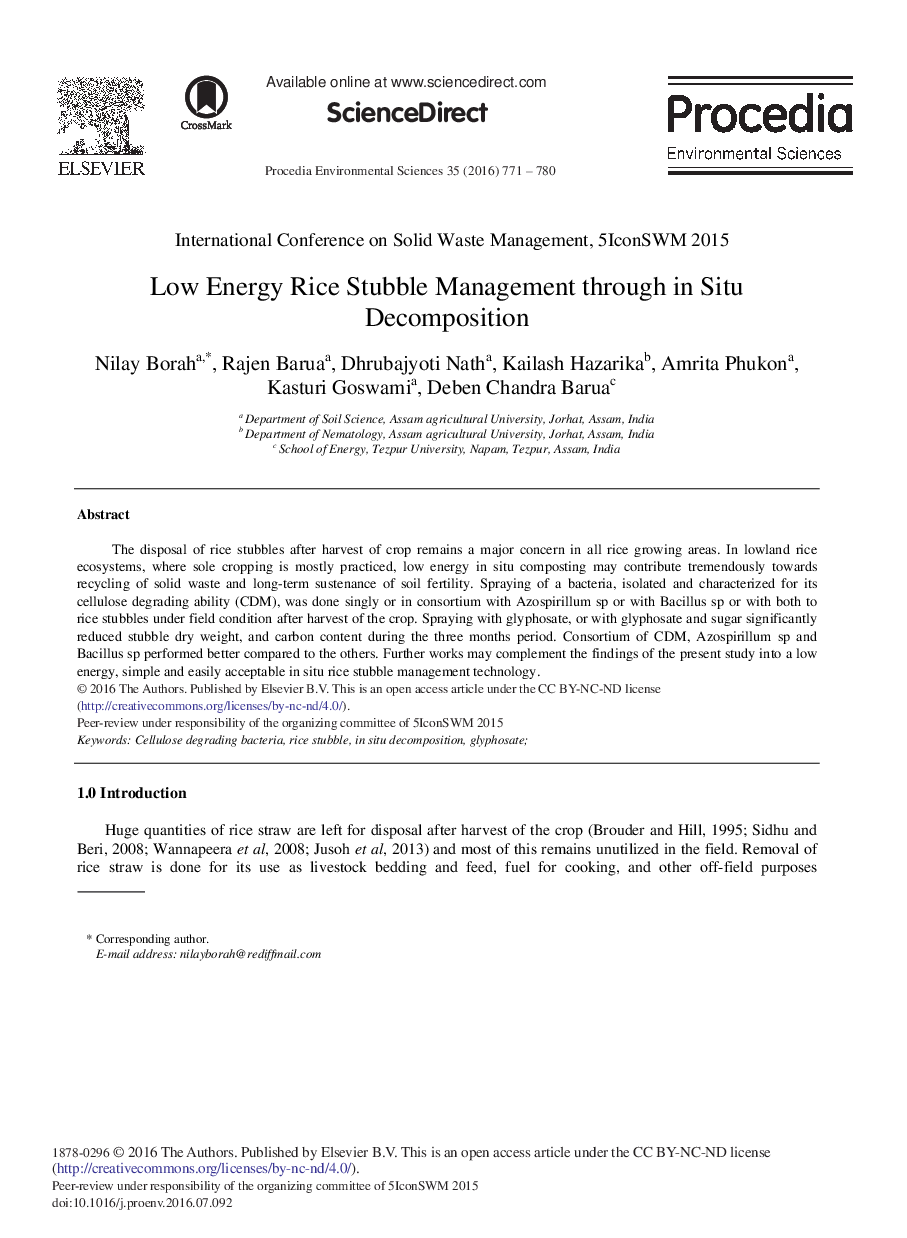| Article ID | Journal | Published Year | Pages | File Type |
|---|---|---|---|---|
| 4401434 | Procedia Environmental Sciences | 2016 | 10 Pages |
The disposal of rice stubbles after harvest of crop remains a major concern in all rice growing areas. In lowland rice ecosystems, where sole cropping is mostly practiced, low energy in situ composting may contribute tremendously towards recycling of solid waste and long-term sustenance of soil fertility. Spraying of a bacteria, isolated and characterized for its cellulose degrading ability (CDM), was done singly or in consortium with Azospirillum sp or with Bacillus sp or with both to rice stubbles under field condition after harvest of the crop. Spraying with glyphosate, or with glyphosate and sugar significantly reduced stubble dry weight, and carbon content during the three months period. Consortium of CDM, Azospirillum sp and Bacillus sp performed better compared to the others. Further works may complement the findings of the present study into a low energy, simple and easily acceptable in situ rice stubble management technology.
